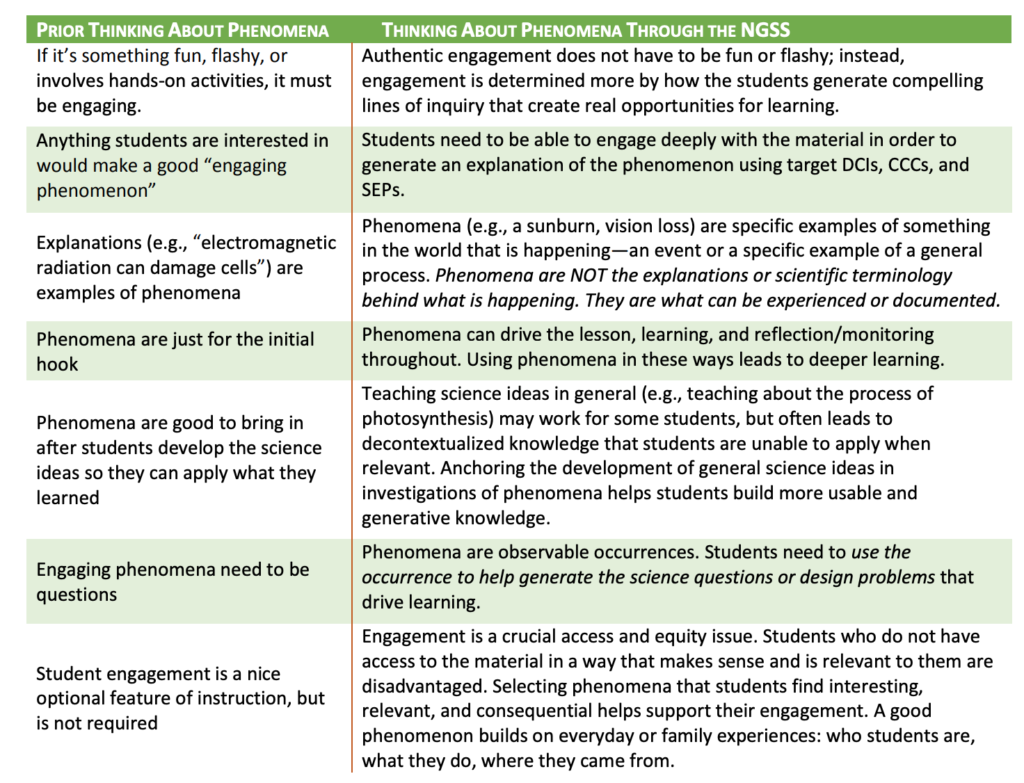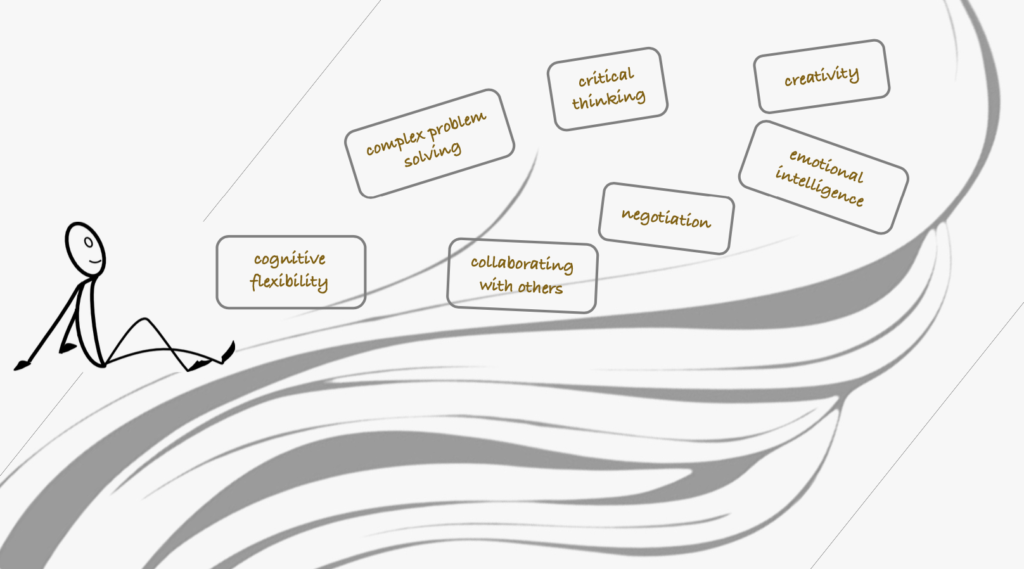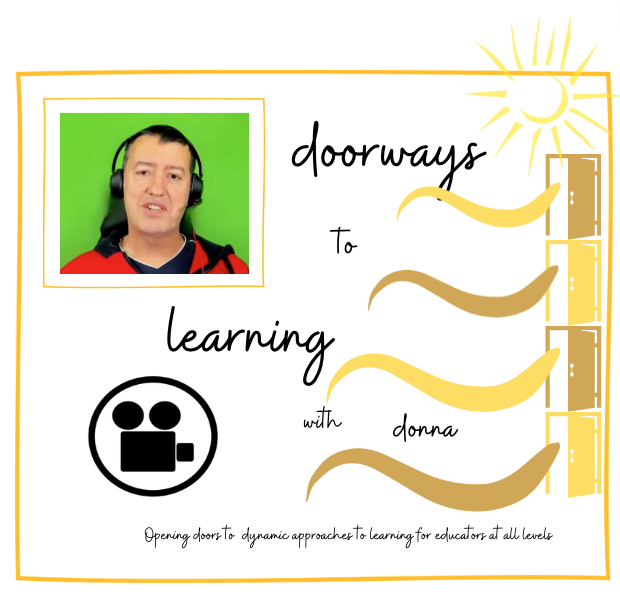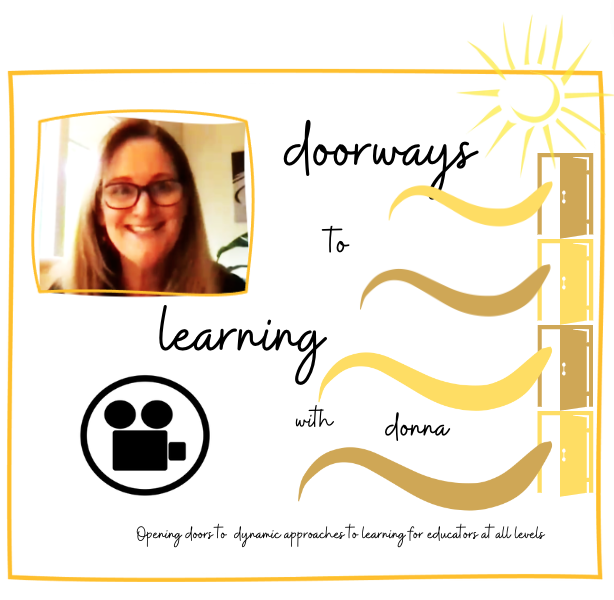WHAT IF…PHENOMENON-BASED LEARNING PROJECTS:
AUGMENTING UPPER AND EARLY LEARNING STEM LESSONS
Donna L. Fields1 and T.J. Kennedy2
Download PDF of article here.
Abstract
An educational movement initiated by Finland’s educational system in 2016, Phenomenon-based Learning (PhBL) strives to expand passive learning approaches into learning experiences that immerse students deeper into contextual situations aligned with real-life issues, while also applying knowledge and skills from multiple disciplines. Cross-curricular material is presented through an enquiryand problem-based structure in which students design, plan and carry out an extended project that produces a publicly-exhibited output such as a product, publication or presentation. It is a powerful means by which students learn 21st Century skills (plurilingual methodologies in key learning areas within the curriculum, and essential social cues).
Particularly suited to building bridges between subject and language teachers, the Phenomenon-based Learning structure developed by the authors, has also been used by teachers of single subjects, in either majority or minority languages and particularly in STEM subjects, where the inclusion of real-life issues augments student engagement. The emphasis on co- and student-agency is a way of developing those skills necessary for students to be relevant in the professional sphere in this age of advanced cybertechnology. This structure focuses on critical thinking techniques, growth mindset mentality, strengthening the affect domain, and creating a classroom culture of trust and excellence. Continual and deliberate scaffolding strategies are integral elements of the structure, and the methodology is compatible for educators who are exploring the CLIL (Content and Language Integrated Learning) approach and are looking for ways to further innovation in their classroom.
Keywords: STEM, ESL, EFL, scaffolding, Phenomenon based Learning (PhBL), Project-based Learning (PBL), Problem-based Learning (PrBL), student centred learning, Content and Language Integrated Learning (CLIL), growth mentality, affect domain, critical thinking.
Introduction
What if… our classrooms produced students who were masters of collaboration, inculcated with the work ethic of excellence, versed on global perspectives, critical thinkers with a top-quality toolbox of strategies, comfortable expressing themselves in public in different languages, and most importantly in this age of the Fourth Industrial Revolution, had the emotional intelligence and empathetic qualities that rendered them more qualified than machines? Phenomenon-based Learning (PhBL) has been proven to extend these elements and help develop students who are positioned to learn on their own and who will be prepared to solve the problems that we will inevitably face in the future.
Strengthening the dynamic of co- and student-agency in the classroom is key to combatting the realities of the increasing efficiency of cybertechnology in this epoch of the Fourth Industrial Revolution. The World Bank 2016 report found that the implementation of artificial intelligence has been destroying some five million jobs in 15 industrialized and developing countries over the past four years (World Development Report, 2016). One of the most viable solutions to this abyss in the human work force is to provide an extensive and varied compilation of skills in education. In effect, the jobs eliminated by new technologies are those requiring routine and physical tasks, while the types of jobs being created tend to require higher levels of education and specialised study (World Economic Forum, 2016). As educators, our job is to give our students agency over their own learning and to help them become highly skilled critical thinkers who know how to work collaboratively and cooperatively, and who can be more adept than machines in the fast-changing environments this merging technology is creating.
Noriko Arai, Director of the Research Department of the University of Tokyo and founder of the Research Institute of Science for Education, has been studying the limits of artificial intelligence in her aim to further the understanding of human thought. In early 2017, after examining the results of exams given both to university students and robots, Arai and her team became fascinated and disturbed by the results: robots, which can only rely on logic and mathematics to answer questions, performed higher than their human counterparts not only in multiple choice questions but in those requiring inferencing – the linking together of information from multiple sources, with critical gaps.
Determined to uncover the reason for this incongruity, Arai discovered that most curriculums are not designed to teach critical thinking, inferencing, on the development of comprehension skills. This leaves students at a great disadvantage in an age in which machines are already able to outperform humans not only in physical labor but in office jobs as well. Upon considering the ramifications of these findings, Dr. Arai concluded ‘it is essential that we take the steps to make sure our students are more intelligent than artificial intelligence’ (Arai, 2017), namely by helping them to develop analytic thinking, to become adept at extracting meaning and to cultivate interpersonal skills.
Artificial intelligence does have its limits, and to keep the human advantage it is incumbent on educators to provide the schooling that helps students to think in ways that machines – that rely on mathematic algorithms to reach conclusions – never can. PhBL provides students with this education, offering opportunities for not only scholastic but social development as well since the PhBL structure emphasises co- and student-agency in both social and academic contexts. Interdisciplinary and multilingual factors are addressed through the Content and Language Integrated Learning (CLIL) approach – teaching through a language that is not the majority communication vehicle of the school as the medium of instruction and learning. Techniques included under the CLIL umbrella of methodologies, such as scaffolding and thinking frames, provide teachers with a platform for implementing holistic education, competence-based learning, learner autonomy, fostering creativity and critical thinking, ultimately changing the curricular framework to the notion of how to learn instead of on what to learn, and recognising the relevance and impact technology has on the lives of students today.
Curriculums planned through projects with the Phenomenon-based Learning structure developed by the authors, and taught through the CLIL approach, generate spontaneous and autonomous environments that help ignite our students’ interests and prepare them for the skills they will need in the emerging work force.
Methodology
Phenomenon-based Learning is deeply rooted in constructivist learning theory as well as socio-constructionist and socio-cultural learning theories. Similar to Project-based Learning (PBL) and Problem-based Learning (PrBL) scenarios (see Kennedy & Odell, 2014; Odell, Kennedy, & Stocks, 2019), PhBL fosters engagement in learning new knowledge and skills as students investigate phenomenon-related topics of personal interest and concern, while making connections across subject areas in a global context. Enquiry questions are typically centered around topics that begin with either a “how”, “why”, or “what if” scenario. Students acquire an understanding of new information through the process of solving the problem associated with the phenomenon they personally identified with and become more responsible and independent as they seek practical relevance to everyday life.
Phenomena should be relevant to the students’ environment and elicit curiosity. Phenomena are “occurrences in the natural and human-made world that can be observed and cause one to wonder and ask questions…requires students to use the science and engineering practices (SEPs), crosscutting concepts (CCCs), and disciplinary core ideas (DCIs) in concert to explore, investigate and explain how and why phenomena occur” (Cerwin et al, 2018, p. 9). The basic criteria educators must consider when determining appropriate phenomena aimed at building and expanding students’ knowledge and understanding in STEM education should answer the following questions (Brown et al., n.d.):
- Is the phenomena observable or able to be investigated through firsthand experiences (e.g., in a classroom, lab, or outdoor environment) or through teacher-led experiences (e.g., demonstrations, videos, or analyzing patterns in data)?
- Is the phenomena grade-level appropriate (e.g., would student explanations be grade-level appropriate)?
- Is the phenomena going to build understandings in support of the grade level performance expectations (e.g., do students understand and incorporate core ideas, science and engineering practices, and crosscutting concepts to explain how and why the phenomena occurs)?
- Is the phenomena relevant to the students’ environment or real-world issues the student is aware of or learning about?
- Is the phenomena interesting and important to society (e.g., will students find making sense of the phenomenon valuable)?
- Is the phenomena justifiable in terms of financial cost and instructional time?
Learning through Phenomenon-based Learning projects creates opportunities to construct the building blocks of key 21st century skills (see Fig. 1) and opportunities for students to practice strategies that create an armory of critical thinking skills; they encourage students to think deeply and laterally about issues, opening windows to a vision of the future.

The basic steps involved in helping your students to develop the knowledge necessary for understanding, explaining, and predicting phenomena include:
- Encouraging students to identify “phenomena” that have a global context and can be related to real life issues or events.
- Asking students to develop inquiry-based questions around the phenomena that begin with either a “how”, “why” or “what if” scenario?”
- Identifying the skills and knowledge students will need to acquire to answer their questions.
- Teaching the basic concepts surrounding the students’ chosen questions and encourage them to try to solve the problems they have identified.
- Providing a learning environment that supports an open structure of time for students to engage in the necessary research and problem-solving.
- Facilitating and guiding students through their research and problem-solving processes in a manner that helps them develop their own way of solving the problem.
For STEM and other subject-area teachers, participating in learning around explaining phenomena and designing solutions to problems allows students to build general science ideas into deeper, more transferable knowledge. The overarching tenents of PhBL are as follows:
- Phenomenon-based Learning contradicts direct, teacher-centered learning by placing emphasis on student participation and learning instead of on teaching.
- All students, including English Language Learners (ELLs) and students from culturally underrepresented populations in STEM fields, should be supported to investigate phenomena that are engaging and meaningful to them.
- Projects should include developing the growth mindset, in grade-appropriate learning contexts, augmenting the affective domain filter, creating a culture of trust and excellence, targeting language acquisition methods, extending the 5Cs of the CLIIL approach in every aspect of planning, crossing interdisciplinary boundaries, recognizing multi-cultural similarities and differences, designing age-relevant topics, and extending relevance in global issues.
- Scaffolding techniques are employed, focusing on strategies and activities as a means of helping students to learn new material and to balance out diversity in the classroom.
- Team-building activities and techniques are embedded into work sessions to engender a culture of trust in the learning environment and to consciously teach students how to problem-solve social issues.
Learning environments are designed that fosters the ethic of excellence (Berger, 2003), in which students have the opportunity to present multiple revisions, with periodic peer and/or teacher assessments to ensure that the final task represents students’ best work. Two types of phenomena are generally incorporated into classroom instruction (Brown et al., n.d.). These include:
- Anchoring Phenomena. “Anchoring phenomena are the focus of an instructional unit connecting student learning across multiple weeks of instruction. They often require significant or in-depth understanding of several science ideas as well as multiple lines of evidence and reasoning to adequately explain. Because of their size or scale, students may only be able to explain particular aspects of an anchoring phenomena.”
- Investigative Phenomena. “Investigative phenomena are used in instructional sequences (across several lessons) to provide students personal experience with observable events where an evidence-based explanation can be constructed. They often require understanding or use of a fewer number of connected science ideas to explain. By explaining investigative phenomena, students begin to explain aspects of an anchoring phenomena.”
CLIL plays a critical role as the substructure of the PhBL model developed by the authors. This can be understood through its five major components: 1) Content (specific content taken from Learning Standards and Learning Objectives), 2) Communication (scaffolding of vocabulary, grammatical structures, functional and academic language), 3) Cognition (critical thinking, thinking frameworks), 4) Competences (language knowledge, planning, cooperation, learner needs, interaction, cultural awareness, evaluation, development, subject knowledge), and 5) Community (local, national and global community) (Mehisto, Marsh, & Frigols, 2008).
Breaking down new knowledge and pre-teaching key ideas, academic language and concepts are filtered through dynamic scaffolding techniques and strategies. Closely aligned to the concept of the Zone of Proximal Development (Vygotsky, 1978), scaffolding is a powerful tool for learning. It introduces new material in ways that respect cognitive load by chunking material into understandable blocks, thus helping students to lower their anxiety levels and become more open and engaged in learning, and subsequently, move forward more confidently. Scaffolding techniques are numerous and varied. They can include different types of decoding devices and mnemonic strategies, as well as combine visuals and text, graphic organizers, and other commonly used classroom learning strategies. Scaffolding techniques are essentially any activity that supports learning, learning about languages, and learning through languages (Canney, Kennedy, Shroeder & Miles, 1999; Fields, 2018; Kennedy, Abbitt, & Odell, 2010).
Phenomenon-based Learning projects stand apart from traditional project-based learning as they include additional elements designed to develop social and academic skills not normally addressed in more traditional models. Designing a PhBL project is not linear, and this in itself can confuse first-time users; however, this brings with it a certain amount of liberty as the teacher can begin wherever desired in the structure, and then circle back, filling in gaps, amending criteria whenever necessary.
Some teachers, for instance, approach a project by defining learning objectives (sometimes synonymous with ‘learning outcomes’). Others need to establish the final task – the mode of exhibition, or how the students will make learning visible. Because learning standards must be the basis of all tasks, some teachers feel the need to begin by establishing these points. However, all can be amended, augmented, adapted or removed depending on the final skills expected to be mastered in the final output.
The enquiry question, like all parts of the structure, can be crafted at any point. What is essential about these key questions is to understand that they may not ostensibly reflect all elements of the final task since their function is aimed at exciting learners about the topic. Their role serves to launch the project and establish an environment of inquiry and engagement.
The most effective enquiry questions are those that open the door to research, have multiple possible answers, seek to address a problem (intellectual, theoretical or philosophical), are connected to the real world, and encourage students to become intellectually engaged. Using the question continuum of lower- and higher-order thinking questions is one way to facilitate this outcome.
Most questions presented in educational settings are designed for lower-order thinking skills; however, PhBL enquiry questions encourage deeper thinking by using higher-order thinking questions, thus changing the educational paradigm. Fig. 2 provides an example of how the forward movement up the question continuum changes the expectations for learners’ personal engagement.

In PhBL projects, co- and student-agency are also targeted through different structural elements, encouraging students to rely on motivation, hope, self-efficacy and a growth mindset (the understanding that abilities and intelligence can be developed) to navigate towards well-being. This enables all learners to act with a sense of purpose, which guides them to flourish and thrive in society (OECD, 2019). Students are involved in creating and agreeing on objectives, formative and summative assessments, scheduling, planning, and at times the enquiry question and final task. Once these basic elements have been established, the process is then extended and enhanced through the inclusion of scaffolding. Scaffolding helps students to transition into new material with more support so that they assimilate the information more deeply (Canney, Kennedy, Shroeder & Miles, 1999; Fields, 2018; Kennedy, Abbitt, & Odell, 2010).
These strategies and techniques are designed to break down the academic language (vocabulary, terms, expressions) included in a scientific theory, the instructions of a laboratory experiment, such as the names of materials needed to construct a simulation light conduit, the graphs presented in an explanatory video on cellular biology, etc., through dynamic and interactive means. The goal of implementing scaffolding activities is to reduce student anxiety when facing potentially challenging material so that new information is assimilated more easily and enters into longer-term memory.
In the PhBL model, scaffolding is presented within a Mini-Lesson. A Mini-Lesson consists of three parts: scaffolding, direct teaching, and formative assessment. Fig. 3 provides an example of a lower-level Natural Science mini-lesson that scaffolds content and language through a critical thinking activity (wild animals, interrogatives, and deciphering).

- Teacher models how to decipher words using the cipher wheel.
- In pairs, students decipher the names of wild animals (3 or 4 ciphered words per pair).
- Teacher gives a set of cards with images of wild animals (teachers with high expectations will print out a set of 20-25 images for each pair).
- Teacher models asking and answering questions.
- Cards are placed face down between pairs.
- First student picks a card from the pile and looks at it.
- Second student asks, ‘Do you have the racoon?’
- First student answers, ‘Yes, I have the racoon.’ or ‘No, I don’t have the racoon.’
- Teacher continues by talking to students about habits of the animals, what they eat, what the difference is between wild and domestic animals, etc.
- Students work in pairs to make their learning visible (formative assessment or final task).
Alternative assessments are also encouraged so that more skills are honoured than just the usual linguistic-logical learning styles. The key purpose of formative assessments in the PhBL structure is to support the learning of content and language, foster critical thinking about both, and to help teachers and learners become synchronized and verify or negate progress. Summative assessments (in this case the final task), are used to demonstrate to others that students are achieving intended learning outcomes, and ultimately to improve learning practices (Mehisto, 2017).
Deep thinking is supported through a variety of thinking frameworks suggested by the PhBL structure. Thinking frameworks can help students become better thinkers by deliberately providing them with tactics and strategies to organise their thinking (Perkins, 1986).
Development of interpersonal skills is an important outcome of PhBL project implementation; a skill that is indispensable at a management level and will be unlikely to be touched by machines in the near or distant future. When excellence is demanded, learners adopt this expectation as a personal credo that will translate into all aspects of their lives and ultimately distinguish them from the other candidates in the work force. Finally, students working to communicate from a wide variety of perspectives and in diverse situations, all in the context of a bilingual/multi-lingual environment, will gain the very skills needed to become viable and desirable candidates in our current and future global market.
The U.S. Next Generation Science Standards (NGSS) are goals that reflect what a student should know and be able to do. These standards outline three dimensions essential to providing students with a high-quality science education: practices, crosscutting concepts, and disciplinary core ideas. These dimensions provide context for the scientific content covered in the classroom, delve into how science knowledge is acquired and understood, and show connections through the integrated nature of science across the disciplines. NGSS established the following summary as the guiding principles of PhBL:

NGSS: Using Phenomena in NGSS-Designed Lessons and Units. Retrieved from https://www.nextgenscience.org/sites/default/files/Using%20Phenomena%20in%20NGSS.pdf.
Additional resources include:
- #ProjectPhenomena, “a collaboration of teacher, industry, university, and community organization leaders who want to help students engage in relevant, engaging, and meaningful phenomena as part of science process.” Their website contains grade level appropriate phenomena that can be incorporated into science lessons and instruction.
For more information see:
- Phenomenon Based Learning Rubric, a resource that can be used by educators to ensure they provide students with a holistic view of real-world phenomena, within a real and global context, while crossing many disciplines (Silander, 2015).
For more information see: http://www.phenomenaleducation.info/.
Results
Studies show that students perform equally, if not higher, on standardised exams after learning through Phenomenon-based Learning projects, than those who are taught through teacher-centred methods. The focus on the learner helps students to become more active in their own process; the inclusion of global issues and multi-cultural recognition, along with the other elements of the PBL structure, activate student engagement, interest and belief in their own future possibilities.
Conclusions
PhBL breaks down the artificial barriers of STEM and general disciplines enabling students to understand the connected nature of knowledge and utilize critical skills leading to success in the 21st century economy while combatting the realities of the increasing efficiency of cybertechnology of the Fourth Industrial Revolution. PhBL employs scaffolding strategies combined with the CLIL approach to focus on critical thinking techniques and growth mindset mentality, strengthens the affect domain, and creates a classroom culture of trust and excellence.
- Professor, Universidad de Jaén,
Valencia, Spain. Email: donna@scaffoldingmagic.com - Professor, College of Education and Psychology; College of Engineering, University of Texas at Tyler, USA. Email: tkennedy@uttyler.edu
Acknowledgements
We thank our colleague Professor Dr. Pasi Silander, educational futurist and computer scientist from the University of Helsinki, Finland, for his collaboration and for sharing of his resources at Phenomenal Education for use in our continued research on PhBL.
References
Graphics:
Using Phenomena in NGSS-Designed Lessons and Units
https://www.nextgenscience.org/sites/default/files/Using%20Phenomena%20in%20NGSS.pdf.
The Phenomenon Based Learning Rubric
Bibliography:
Álvarez, Fabián (2016) Cipher Wheel. Retrieved from http://fabalv.com/cipherwheel/.
Arai, Noriko H. (2017). ‘Reading Skill Test to Diagnose Basic Language Skills in Comparison to Machines’, Research Map’. Retrieved from https://researchmap.jp/arai_noriko.
Berger, Ron (2003). An Ethic of Excellence: Building a Culture Craftmanship with Students. (Educational Books), Heinemann. U.S.
Brown, K., Burditt, T., Cerwin, K., Clark, J., Cochrane, C., DiRanna, K., DiRanna, N., Goodbody, M., Grace, J., Hagan, W., Howe, C., McCluan, J., O’Connor, D., Peach, C., Pearce, C., Simani, M.C., Spiegel, J., & Topps, J. (n.d.). Criteria for selecting useful phenomena [Web log post]. Retrieved from https://sites.google.com/site/sciencephenomena/criteria.
Canney, G., Kennedy, T.J., Shroeder, M., & Miles, S. (February, 1999). “Instructional Strategies for K-12 Limited English Proficiency (LEP) Students in the Traditional Classroom.” The Reading Teacher, 539-544.
Cerwin, K., DiRanna, K., Grace, J., LaFontaine, P., Ritchie, S., Sheriff, J., Topps, J., Tupper, D., Vargas, C., Woods, B., Tyler, B., Britton, T., & Iveland, A. (2018). Next Generation Science Standards in Practice: Tools and Processes Used by the California NGSS Early Implementers (pp. 1-74, Rep.). CA: WestEd. Retrieved from https://www.wested.org/resources/next-generation-science-standards-in-practice/.
Fields, Donna Lee (2018). 101 Scaffolding Techniques for the Language and Content Teaching (Editorial Octaedro), Barcelona.
Kennedy, T.J. & Odell, M.R.L. (2014, September). “Engaging Students in STEM Education.” Science Education International, 25(3), 246-258. Retrieved from http://www.icaseonline.net/sei/september2014/p1.pdf.
Kennedy, T.J., Abbitt, J.T., & Odell, M.R.L. (2010). “Pre-service ELL Science Teacher Preparation in the Southeast United States.” In D.W. Sunal, C.V. Sunal, & E. L. Wright (Eds.), Research in Science Education: Teaching Science with Hispanic ELLs in K-16 Classrooms, Chapter 8, 183-199. Information Age Publishing. Retrieved from https://tinyurl.com/t2moybl
Mehisto, P., Marsh, D. & Frigols, M.J. (2008) Uncovering CLIL: Content and Language Integrated Learning and Multilingual Education. MacMillan, U.K.
Mehisto, P. (2017). CLIL Essential. Cambridge University Press, U.K.
Odell, M.R.L., Kennedy, T.J., & Stocks, E. (2019). “The Impact of PBL as a STEM School Reform Model.” Interdisciplinary Journal of Problem-Based Learning, 13(2).Retrieved from https://docs.lib.purdue.edu/ijpbl/vol13/iss2/4/.
OECD Future Of Education And Skills 2030: OECD Learning Compass 2030 (2019). Retrieved from http://www.oecd.org/education/2030-project/teaching-and-learning/learning/student-agency/Student_Agency_for_2030_concept_note.pdf.
Perkins, D. N. (1986) Thinking Frames. Association for Supervision and Curriculum Development, Educational Leadership.
Silander, P. (2015). Phenomenon Based Learning Rubric. Retrieved with permission from http://www.phenomenaleducation.info/.
Vygotsky, L. S. (1978). Mind in society: The development of higher psychological processes. Cambridge, MA: Harvard University Press.
World Development Report 2016, ‘Digital Dividends’, 102725. Retrieved from https://www.weforum.org/press/2016/01/five-million-jobs-by-2020-the-real-challenge-of-the-fourth-industrial-revolution/.
World Economic Forum (2016). Annual Report 2016. Retrieved from http://www3.weforum.org/docs/WEF_Future_of_Jobs.pdf
Young, Dolly Jesusita (1999). Affect in Foreign Language and Second Language Learning. McGraw-Hill College, U.S.

Scaffoldingmagic.com is your entryway into DYNAMIC bilingual learning methodologies, such as Phenomenon-Based Learning, CLIL, EMI, and ESL. You’ll find ways to implement critical thinking tools (DOK) to promote higher level thinking, the growth mindset, instill an ethic of excellence, deep reflection on learning, and all through multi-cultural, interdisciplinary activities. We have the keys to turning competences into action and to creating collective efficacy in your school so you move ahead as a unified, enthusiastic team.



